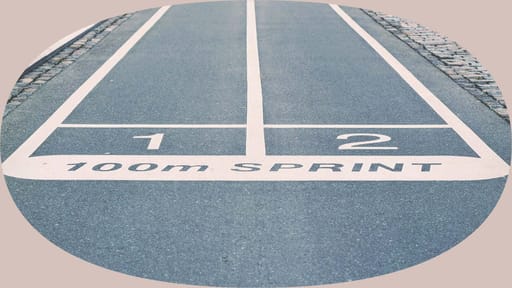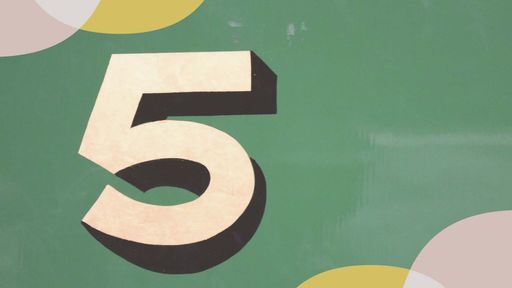Achieving Peak Productivity: A How-to Guide for Remote Workers

by Nathan Allen

Working from home (WFH) might sound like an opportunity ripe for procrastination and other inefficiencies, but evidence shows that remote work actually leads to greater productivity.
A survey of hundreds of remote workers revealed that the average remote worker puts in 1.4 more days per month than the average office employee. In a study published a month later, time-management company RescueTime showed that remote workers spend about 4 percent more time on core work and 18 percent less time on communication.
These are great stats—but how can you actually achieve those productivity bumps as you work from home? Here are seven simple ways you can make your WFH time work better.
1. Wrangle Your Workspace
Set yourself up for success by turning your workspace into a productivity haven.
First, apply a little elbow grease and clean up. A cluttered workspace can waste hours every week while you hunt for the one document you need (hint: It was in that pile right in front of you all along). Note that the modern version of a cluttered workspace is a disorganized desktop. Clearly labeled file folders can help with both.
Now that your workspace is nice and neat, make it appealing by adding a few plants, along with access to the natural light that they—and you—thrive on. And don’t forget some pops of color: Green and blue are calming, while yellow can inspire creativity.
2. Nix the Multitasking

After you get your space in order, it’s time to think about your preferred work style. Start with one change that may surprise you: Forget about multitasking.
Not only is multitasking physically draining, but it also can be detrimental to brain function and productivity. A PBS interview with Stanford University professor Clifford Nass outlines his research and explains why multitasking is counterproductive.
“It turns out multitaskers are terrible at every aspect of multitasking,” Nass told PBS.
Now you’re thinking, “Of course I multitask. Everyone multitasks. What planet do you live on?” You’re also assuming that multitasking just means doing more than one task at once, like cooking dinner while you talk through a homework problem with your third-grader. But that’s not Nass’s definition. His research defines multitasking as “looking at multiple media at the same time.” That’s a little different.
To improve your productivity, Nass recommends not working on more than two tasks in different media at once. So, no, you really can’t proof your marketing brochure while participating in a Zoom conference. Instead, you should block out times to work on each task (see “Embrace Intervals,” below). Although the intervals seem to take more time, focusing on your tasks one at a time is much more effective than switching back and forth.
3. Think Inside the Eisenhower Box
To help decide which task is most important and when to do it, consider a strategy from a past leader: Dwight D. Eisenhower, one of the most productive presidents in US history.
On his website, author James Clear outlines the Eisenhower Box and how modern workers can adopt it. The box is essentially a decision tree to help you prioritize tasks by slotting them into four categories: “urgent and important,” “important but not urgent,” “urgent, but not important,” and “neither urgent nor important.” Once you’ve prioritized, you can pursue the most effective action for that task. The best part about this tool, Clear says, is how it can translate to planning a week, a month, a day, or even a few hours.
4. Embrace Intervals
Once you have planned your tasks, establish an interval-based workflow to ramp up your efficiency.
Consider the überprolific Victorian writer Anthony Trollope. Over a 35-year span, Trollope wrote 47 novels and many more plays, short stories, and nonfiction books—all while working as a post office inspector. His secret? Trollope wrote in 15-minute intervals, cranking out 250 words during each one.
On her blog, copywriter Nicole Bianchi explains more about how Trollope’s technique can be adapted to your everyday work by setting a 25-minute timer for uninterrupted focus. When the timer goes off, Bianchi advises, take a three-to-five-minute break and be completely off the clock. Set the timer again. Rinse. Repeat.
5. Balance Your Blood Sugar
I know—like you need another media outlet telling you what to put in your body. But before we lose you, consider research that shows eating more fruits and veggies throughout the day makes you happier and more engaged—and increases your creativity.
What’s really important here is keeping your blood sugar on an even keel. Harvard Business Review suggests that in addition to chomping on plenty of veggies and fruits, you avoid high-carb and high-fat foods during work hours. Yes, carbs can give you a surge of productivity, but that buzz is followed by a slump, unless you’re doing some pretty serious exercising. And while fatty foods create sustained energy, they also require a lot of work from your digestion—which means less energy available for your brain.
A final tip: Snacking (not snarfing) through the day is better for you. Instead of having one big meal at lunch, stock an area near your workspace with healthy nibbles, like nuts, dried fruit, and protein bars.
6. Be Smart About Water
Much like healthy eating, hydration significantly impacts how well we feel, think, and work. Staying hydrated has been proven to increase cognitive function and mental performance while combating fatigue—which drains productivity.

How much water should you drink each day? A good rule is about two 32-ounce bottles for women and two and a half 32-ounce bottles for men. For optimum results, sip water through the day, instead of chugging a giant bottle all at once.
7. Keep on Moving
Consider this your reminder that sitting still is the smoking of today, as Nilofer Merchant highlighted in Harvard Business Review.
Beyond the health implications of physical inactivity, research also shows that staying active boosts creativity and productivity. The same study concludes that short but frequent walk breaks are more beneficial than longer, less frequent ones.
Getting up at least once an hour for a 5-to-10-minute walk break is best. Remember Trollope’s interval technique? Try breaking up your work sessions with brief walks around the block—or your workspace.









